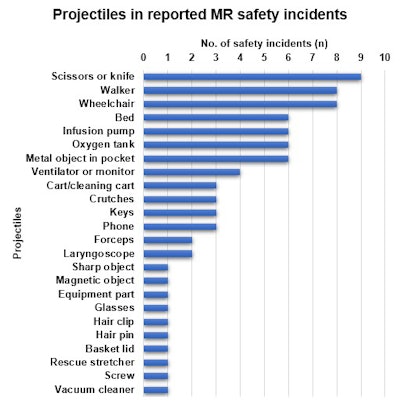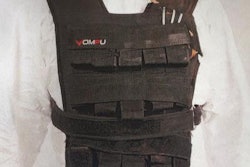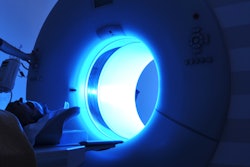
A false sense of security exists when it comes to MRI safety, and many staff members are unaware of reported incidents within their own department, a large Swedish survey has found. The results were posted online on 13 December by European Radiology.
"This national survey has shown that safety incidents resulting in human injury, material damage, and close calls in clinical MR environments do occur. Risk level of these incidents is high," noted lead author Boel Hansson, a 7T research radiographer from the department of medical imaging and physiology at Skåne University Hospital in Lund.
Using CT for comparison highlighted that hospital managers might now consider safety and feedback differently, depending on the modality, stated Hansson and colleagues.
Over 350 safety incidents
The authors' main goal was to survey MR safety incidents in Sweden during a 12-month period, to assess severity scores, and to evaluate the confidence of MR personnel in incident-reporting mechanisms. There is no national register for MR-related safety incidents. Using a web-based questionnaire on safety in clinical MR environments with CT for comparison, they collected data for MR and CT safety incidents.
The 529 participants reported a total of 200 MR and 156 CT safety incidents. Among the MR incidents, 16% were given the highest potential severity score. More MR workers (73%) than CT workers (50%) were confident of being aware of any incident occurring at their workplace, but in reality 69% of MR workers were not aware of reported incidents at their hospitals (83% for CT).
They also requested information about the type of projectiles involved in these incidents.
 Short descriptions of projectiles involved in safety incidents (n) specified by participants in voluntary free-text comments.
Short descriptions of projectiles involved in safety incidents (n) specified by participants in voluntary free-text comments.Reported MR incidents were mainly related to burns and projectiles, and were thereby related to the static magnetic field or the radiofrequency field. Safety incidents related to ergonomic risks affected both patients and personnel and were mainly raised by CT users, which might be related to the larger throughput of patients at CT compared to MR, according to the authors.
"Reported close calls were predominant among MR safety incidents in this study, and we interpret this finding as reflecting a considerable awareness of safety risks and that safety practices and routines are in place as a necessary base for MR accident prevention," they wrote. "No lethal cases were reported for MR in this study."
Many close calls, however, involved large items such as wheelchairs, ventilators, oxygen tanks, and beds, and several lethal cases could have happened. This is also reflected in the fact that 15 (16%) MR safety incidents specified were given the highest potential -- worst-case scenario --severity score, they continued.
Urgent need for action
To minimize vulnerability, it is essential to continuously review safety routines, staff education, and feedback mechanisms on incidents, and they advocate a change of culture toward learning from mistakes. Further, confidence in internal communication or local reporting systems might be much greater than the true usefulness of such routines, as shown in this study, and they need to be designed carefully.
Even if most MR sites in Sweden have safety screening checklists, MR safety incidents still occur. Radiographers, radiologists, personnel from other departments accompanying patients to MR units, administrative staff, janitors, and firefighters are important pieces of the MR safety puzzle, and leaving out one piece of the jigsaw might jeopardize security and possibly lead to a catastrophe, the authors stated.
They urge the MRI community to take the following four steps:
- Identify potential risk zones.
- Design specific educational programs dedicated to every category of professionals that work in or might visit MR sites, with a focus on vigilance of MR personnel on potential mistakes, potential misunderstandings, and knowledge gaps.
- State clear MR safety procedures, including screening forms that are confirmed with an interview just before entering the MR scanner room.
- Facilitate rigorous but easily manageable incident-reporting systems, with the focus on prevention and learning from mistakes.
"The results indicated that MR personnel tend to have a false sense of security, as a high proportion of staff members were sure that they would have been aware of any incident occurring in their own department, while in reality, incidents did occur without their knowledge," they concluded.



















